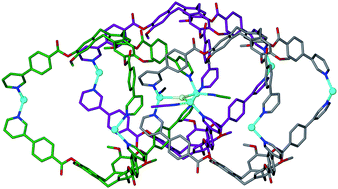Extended 36 and 63 arrays of capsule motifs using ligand tris{4-(3-pyridyl)phenylester}cyclotriguaiacylene†
Abstract
The host

- This article is part of the themed collection: CrystEngComm celebrates it's 10th anniversary with the publication of a theme issue containing articles written by Board members - old and new

 Please wait while we load your content...
Please wait while we load your content...